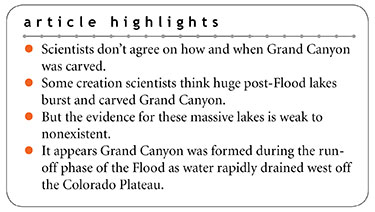 Secular science has long struggled to explain the timing and origin of Grand Canyon. The majority of secular scientists assumes it was carved by a large river in less than six million years.1 Why did it form where it did? In particular, how did the river “hurdle” the massive Kaibab uplift?
Secular science has long struggled to explain the timing and origin of Grand Canyon. The majority of secular scientists assumes it was carved by a large river in less than six million years.1 Why did it form where it did? In particular, how did the river “hurdle” the massive Kaibab uplift?
One of the issues secular scientists struggle to explain is how the water passing through the canyon could have possibly become connected from one side of the Kaibab uplift to the other. The uplift has warped an arch of rock about 3,000 feet above the surrounding terrain,1 and Grand Canyon currently cuts right through it.
To explain the dilemma of an incised river2 that seemingly had to flow uphill, some secular scientists claim that Grand Canyon was carved by stream piracy, a unique process involving headward erosion.1 This in itself is very tricky because it requires two streams flowing in opposite directions to meet at the exact same point and then somehow erode away enough for one stream to take over the other—thus the piracy. But this explanation doesn’t solve the problem: There is still a major drainage divide between the two rivers, even if the headwaters did touch at some time in the past. It doesn’t remove the uplift problem. Water would still flow in opposite directions away from the divide as it does all along the Continental Divide today.
Other secular scientists claim there were caves that may have allowed the streams on either side of the uplift to initially connect underground.1 They suggest these caves later collapsed and the canyon had a ready-made path through the uplift. But this is problematic because the layer of limestone the caves could have formed in was also warped up about 1,500 feet by the Kaibab uplift, causing the water to still have to somehow flow uphill. In addition, the carbonate layer, like the Redwall Limestone that contains caves today, is not thick enough to collapse and remove the total amount of topographic relief. The Redwall is about 600 feet thick, and even if the entire unit had been a cave, it wouldn’t remove the remaining 900 feet of relief caused by the Kaibab uplift. The streams on either side would still flow away from each other.
Secular science is left without an adequate explanation for how Grand Canyon developed through a major uplift. The river should have flowed around it, but it didn’t.
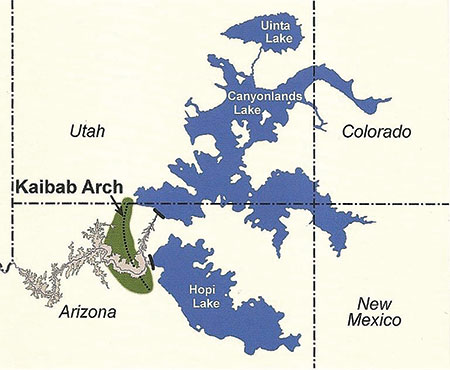
Grand Canyon formed during the latter part of the runoff phase of the Flood. ![]()
Creation scientists have also disagreed on the timing and origin of Grand Canyon, but we generally all agree it happened within the last 4,500 years. One of the most popular ideas is the breached-dam hypothesis advocated by Drs. Walt Brown3 and Steve Austin.4 Both support a post-Flood formation of Grand Canyon caused by the sudden breaching of two presumed dammed lakes, Hopi Lake and Grand Lake (alternatively called Canyonlands Lake). Both scientists believe these lakes formed a few hundred years after the Flood, placing their development during the Ice Age or shortly thereafter. The lakes are claimed to have held over 3,000 cubic miles of water, roughly equivalent to three times the volume in Lake Michigan.1 The explanation for the breach varies, but advocates for this hypothesis claim a catastrophic release of this dammed water carved Grand Canyon.
The biggest problem with the breached-dam hypothesis is the lack of physical evidence for the existence of these lakes. Secondly, there is no satisfactory reason given for the cause of the breach through the Kaibab uplift.5 These were not ice-dammed lakes like other catastrophic breaches. In fact, Mike Oard pointed out that the water should have taken a different direction if, in fact, it did breach, carving a canyon to the north of the uplift instead of through it.5
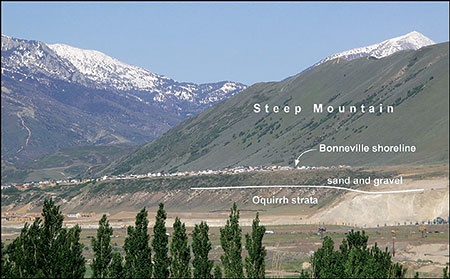
Let’s examine the evidence for these massive lakes that presumably built up over a few hundred years after the Flood. Helble and Hill point out that there is virtually no evidence for Grand Lake, supposedly the bigger of the two.1 And the evidence for the southern and smaller lake, Hopi Lake, is also weak. So right away, the largest body of water can be eliminated from a scientific point of view. Merely drawing in a vast lake based on today’s topography, without strong evidence to back it, is speculation, not science.
Neither of these “lakes” has any mapped lake-cut terraces or strand lines as are common surrounding Lake Bonneville, the Ice Age lake that has since evaporated to form present-day Great Salt Lake. Also, many other Ice Age lakes show evidence of temporal strand lines or wave-cut terraces, including areas along the shores of the northern lower peninsula of Michigan.
Admittedly, the presumed Hopi Lake does contain a sedimentary unit known as the Bidahochi Formation, claimed by secular geologists to represent a lake environment. However, this formation has been dated by secular geologists as between six and 16 million years old, based on igneous intrusions that cut across the unit.1 Although I disagree with this date and the dating methods used, these dates imply an age older than the Ice Age, which precludes this unit as a post-Flood source of water for the breached-dam hypothesis. Additionally, Helble and Hill point out that recent research shows the Bidahochi Formation is composed of several smaller lakes that likely were not well-connected.1 So, the evidence for any major lakes that formed after the Flood to carve Grand Canyon is weak at best.
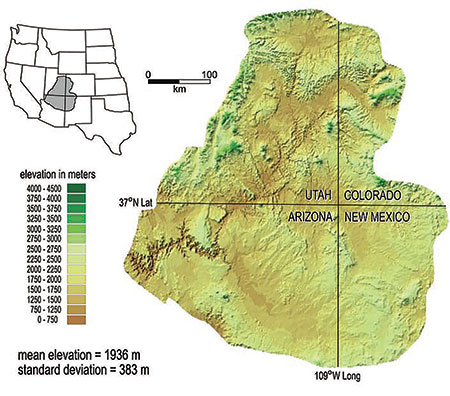
In the mid-1990s, Steve Austin advocated for the breached-dam hypothesis because at the time he accepted a Flood/post-Flood boundary near the top of the Cretaceous System (K-Pg).4 His choice of that Flood boundary left few other options. He had to somehow come up with a massive source of water since he believed the Flood runoff phase was over before Grand Canyon was carved. Picking the wrong Flood/post-Flood boundary can clearly affect other interpretations even when the data tell us otherwise. This is why it’s so important to pick a post-Flood boundary based on as much data as possible.6
If there were no post-Flood lakes, how can we explain Grand Canyon in a Flood model? I think the best solution is the one Mike Oard presented in his book on Grand Canyon.5 Oard suggests Grand Canyon formed during the latter part of the runoff phase of the Flood. This would coincide with the latter part of the Tejas Megasequence.
After catastrophic plate motion ceased late in the Flood year, and even before, the thickened areas of continental crust would have begun to rise due to isostatic adjustment. In other words, the land rose to reach a balance due to the thickened crust that formed during subduction. This process caused the Four Corners region and the Colorado Plateau to rise about 5,000 feet late in the Tejas Megasequence (Neogene).7 Grand Canyon is on the western edge of that uplift. Oard suggests the floodwaters receding in this area may have initially drained to the east during a sort of sheet-wash phase.5 This easterly direction of transport deposited the Whopper Sand in the Gulf of Mexico during the earliest part of the Tejas.8 Later, as the Colorado Plateau rose, the water-flow reversed direction, diverting the drainage to the west and carving Grand Canyon toward the end of the Tejas. He called this latter draining the channelization phase of the runoff.5
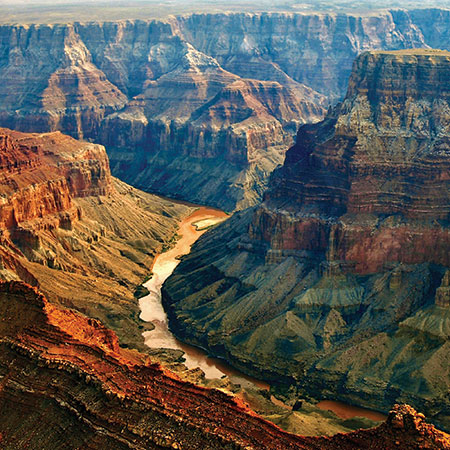
If you uplift packed, wet sand, it will crack. Similarly, if you pack wet sand on your legs at the beach and then move your legs, the sand cracks. Water follows the easiest path. Water would naturally follow the cracks and fractures in the freshly deposited sediments of the uplifted Colorado Plateau. Some of it would have undoubtedly run through the fractures in the Kaibab uplift, creating a possible path through the uplifted and stacked sediment. And since water at the surface flows downhill, the water draining off the Colorado Plateau would flow westerly toward the Pacific Ocean. Rapid uplift, cracking, and surface drainage of receding floodwaters provide both the path and the necessary volume of water to quickly carve out Grand Canyon. This was all accomplished before the Ice Age during the receding phase of the Flood and not during or after the Ice Age.3,4
One of ICR’s volunteers asked why the receding floodwater didn’t form more “Grand Canyons.” Why is there is just one? The answer has to do with the right combination of events that make Grand Canyon unique. First, Grand Canyon needed a major uplift to erode down through. This was provided by the late-Flood isostatic rise of the Colorado Plateau, causing the entire Four Corners region to move upward about 5,000 feet. Second, fractures and fissures were needed to channelize the runoff water along the western edge of the Colorado Plateau, directing the path of the water and rapidly carving a canyon 5,000 feet deep. Third, there had to be a sufficient volume of water left in the receding phase to carve a major canyon. Fourth, all of these events had to coincide at just the right moment. Without the massive uplift, timed perfectly with the channelization phase of the receding floodwater, there would have been no Grand Canyon.
Other large canyons formed in the United States during the receding phase, such as Texas’ Palo Duro Canyon, but it’s not very deep in comparison to Grand Canyon. Palo Duro Canyon formed from channelized runoff water that flowed eastward away from the uplifted Rocky Mountains late in the Flood. However, the Texas Panhandle region did not experience as much uplift as the Colorado Plateau. Palo Duro Canyon, although the second-largest canyon in the U.S., is only about 700 feet deep at its maximum.9
All of these major canyons we see today are reminders of the immense power of the Flood’s waters. ![]()
All of these major canyons we see today are reminders of the immense power of the Flood’s waters. Even their recession left the fingerprints of “grand” canyons as a witness to God’s global judgment by water as recorded in the book of Genesis.
References
- Helble, T. and C. Hill. 2016. Carving of the Grand Canyon: A Lot of Time and a Little Water, a Lot of Water and a Little Time (or Something Else?). In The Grand Canyon, Monument to an Ancient Earth: Can Noah’s Flood Explain the Grand Canyon? C. Hill, G. Davidson, T. Helble, and W. Ranney, eds. Grand Rapids, MI: Kregel Publications, 163-171.
- “Incised” means the river has cut or eroded a deep channel or canyon through rock.
- Brown, W. 2015. In the Beginning: Compelling Evidence for Creation and the Flood, 9th ed. Phoenix, AZ: Center for Scientific Creation.
- Austin, S. A. 1994. How Was Grand Canyon Eroded? In Grand Canyon: Monument to Catastrophe. S. A. Austin, ed. Santee, CA: Institute for Creation Research, 83-110.
- Oard, M. J. 2014. A Grand Origin for Grand Canyon. Chino, AZ: Creation Research Society.
- Clarey, T. L. 2017. Local catastrophes or receding Floodwater? Global geologic data that refute a K-Pg (K-T) Flood/post-Flood boundary. Creation Research Society Quarterly. 54 (2): 100-120.
- Wicander, R. and J. S. Monroe. 2013. Historical Geology, 7th ed. Belmont, CA: Brooks/Cole.
- Clarey, T. 2015. The Whopper Sand. Acts & Facts. 44 (3): 14.
- Clarey, T. 2018. Palo Duro Canyon Rocks Showcase Genesis Flood. Acts & Facts. 47 (7): 10.
* Dr. Clarey is Research Associate at ICR and earned his Ph.D. in geology from Western Michigan University.













